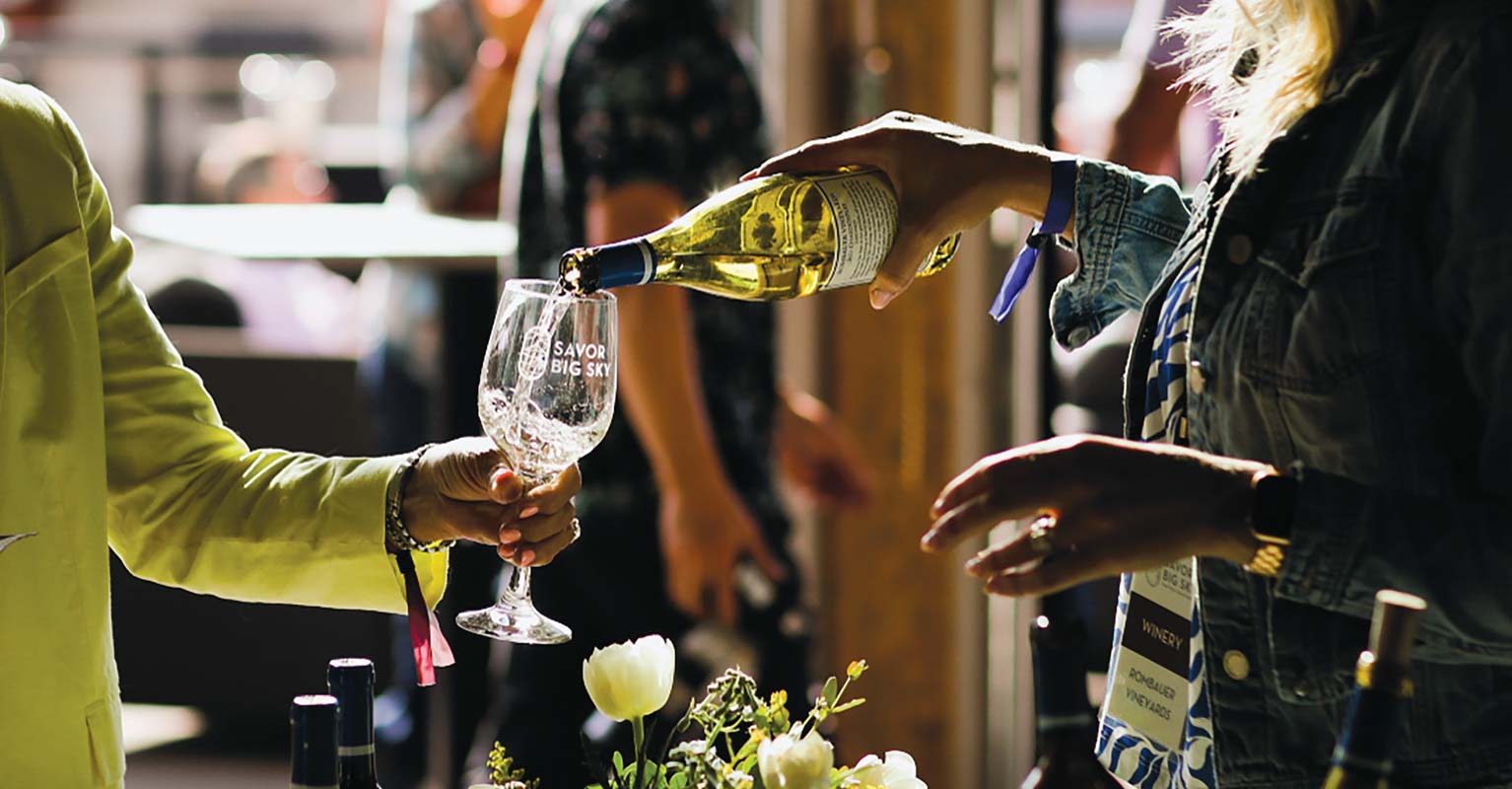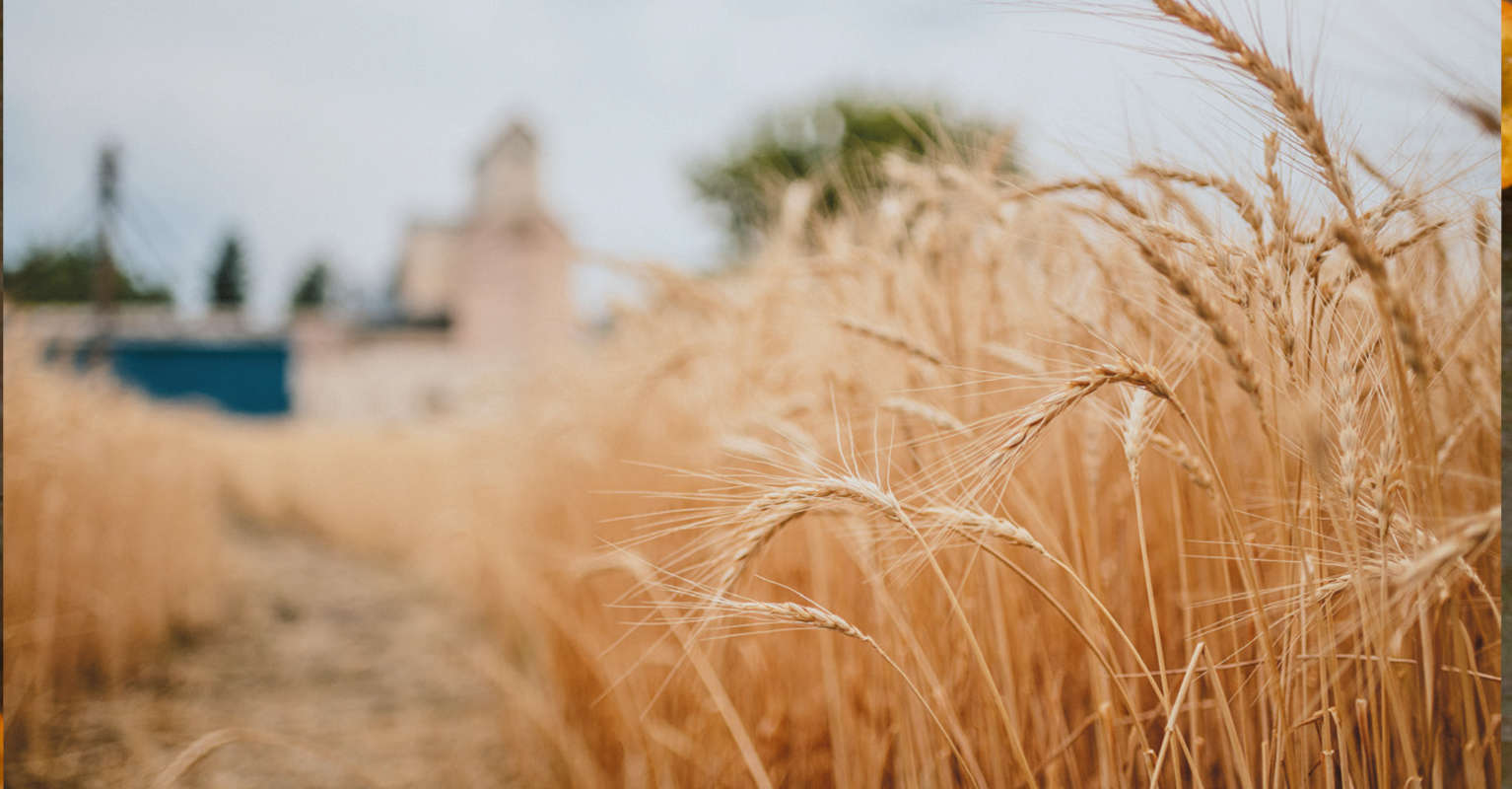Producers of Sustainably Raised Pork in Montana
In Montana, summer months are often marked by dry spells. Lush, verdant springtimes quickly give way to an abundance of golden-brown grasses, the skies made hazy with smoke. Across this drier landscape, we might most readily imagine cattle grazing. Less familiar, however, are the small farms and ranches across the region committed to sustainably raising pork for local consumers. Last summer, with pastures unusually as green as they had started and with the skies clearer than in years past, I set out to meet a few of our region’s pork producers.
HARDSCRABBLE RANCH
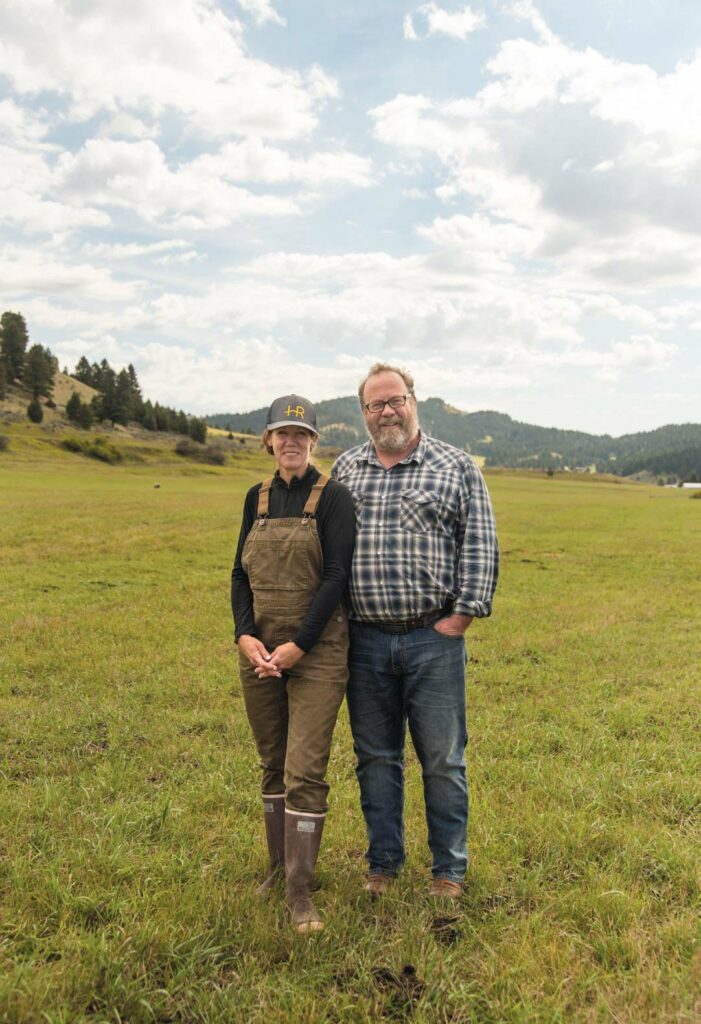
Hardscrabble Ranch rests along Brackett Creek, on the east side of the Bridger Mountains. After living in Bozeman for 15 years, Kris and Peter Stewart set out in search of more space and acquired the ranch’s 80 acres, their hearts set on raising animals. While they continued the property’s legacy as a guest ranch and venue, the Stewarts also began to raise pigs. “We’ve had pigs from the beginning,” Kris says. “They’re fun, they’re smart.” The ranch has tried a range of heritage breeds, from Berkshires to Red Wattles to Durocs. They’ve found the Gloucestershire Old Spots, however, to be the most adaptable— as well as the smartest.
Kris and Peter now co-graze their five heritage-breed sows, which yield 40 to 50 pigs each year for individual local buyers, alongside chickens, yaks, and most recently a pair of retired dairy cows. Also fed intentionally sourced, locally grown grain from Big Timber, their pork is as local—and “delicious,” Peter says—as it gets.
FREE RANGE FARM
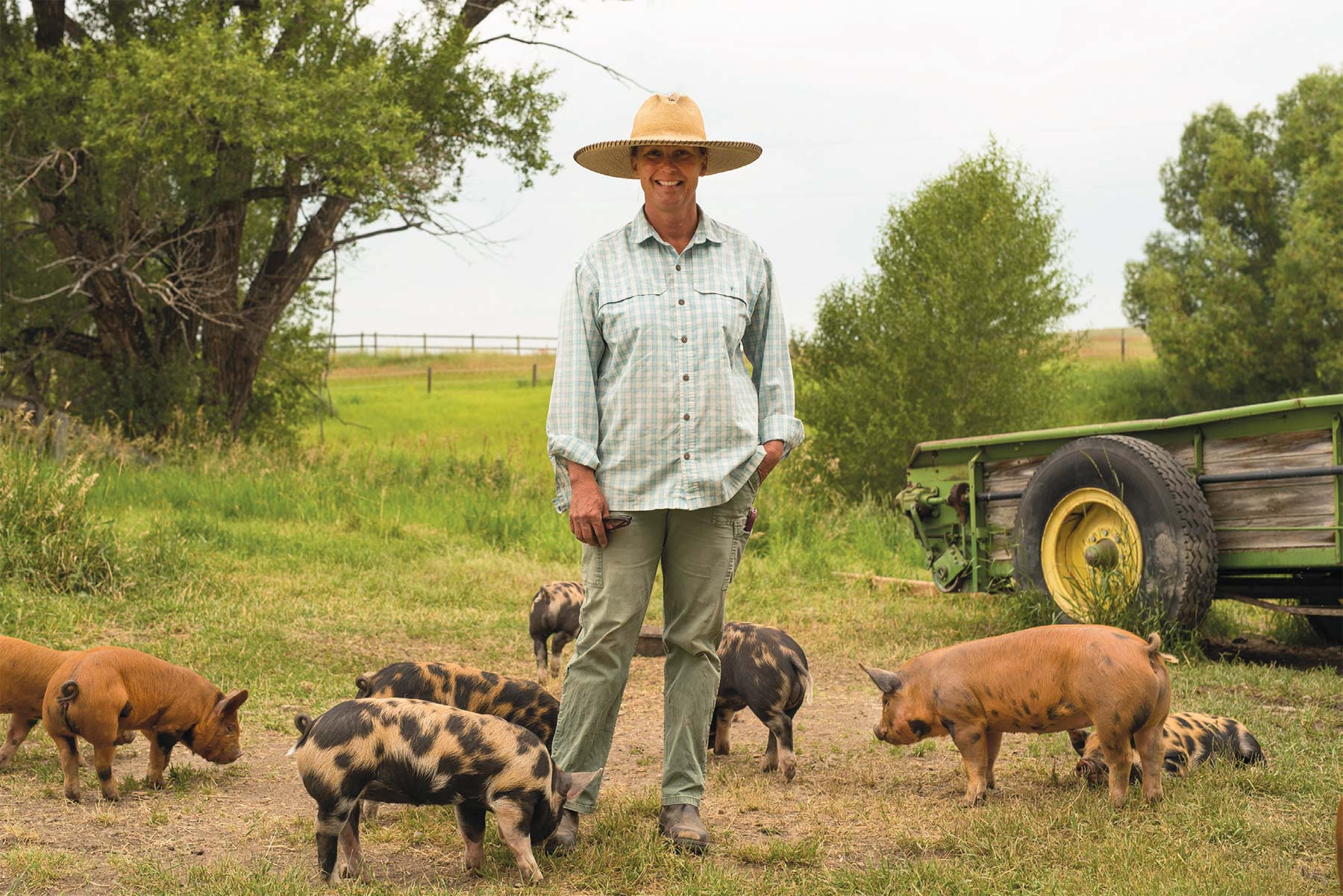
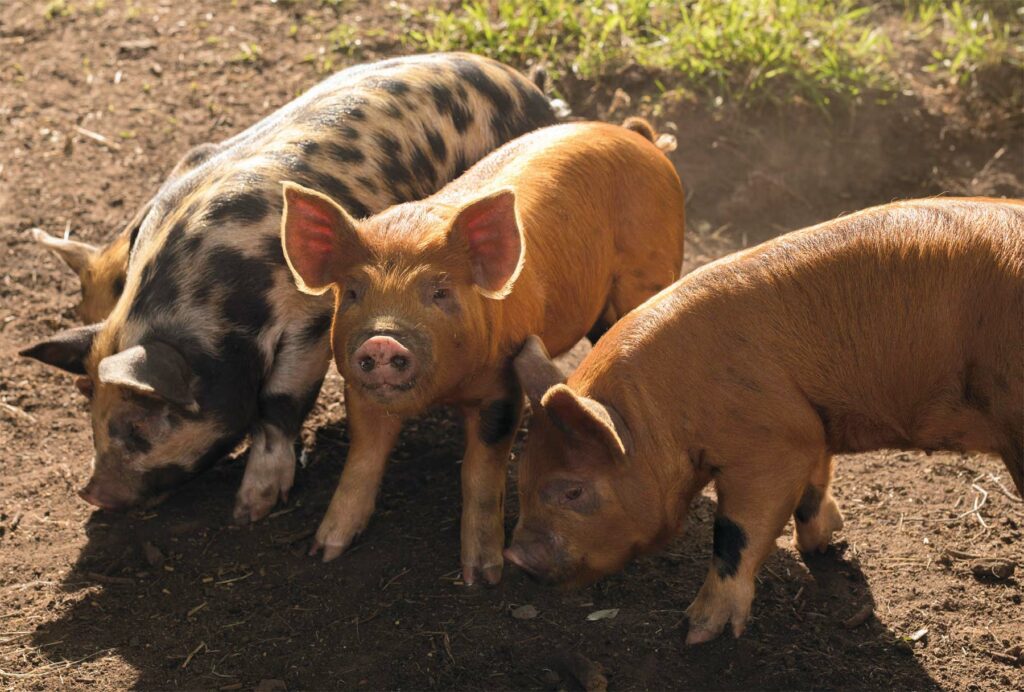
Jen Vermillion’s farm rests quietly among a patch of lush creek-fed willows and cottonwoods. She and her husband have been living there, just north of Livingston, for almost 17 years. They began utilizing their land by producing hay and leasing it out for cattle, but now clusters of pigs dot their property in sections. Small roads wind through tall grasses, old trees, and just-swathed hayfields, connecting each of the pigs’ many grazing areas. It’s easier to manage them in larger herds, she explains, but she’s found they grow better in smaller groups.
A background in land restoration was one of many things that ultimately led Jen to introduce pigs to her farm. She lets her pigs out to graze with intention, aiming to increase their quality of forage while also decreasing fire risks and promoting native species and natural habitats. She sells her pigs as halves or wholes to area buyers and offers individual cuts through The Meat Up (themeatup.localfoodmarketplace.com). She works with a local butcher who harvests them on site to minimize stress on the animals. With a love of cooking (and a fascination with curing meats), Jen is motivated to raise high-quality pork. Sustainably raised pork, she says, is just different: “There’s a lot of marbling, and the flavor’s just exceptional.”
OLIVE BRANCH PORK
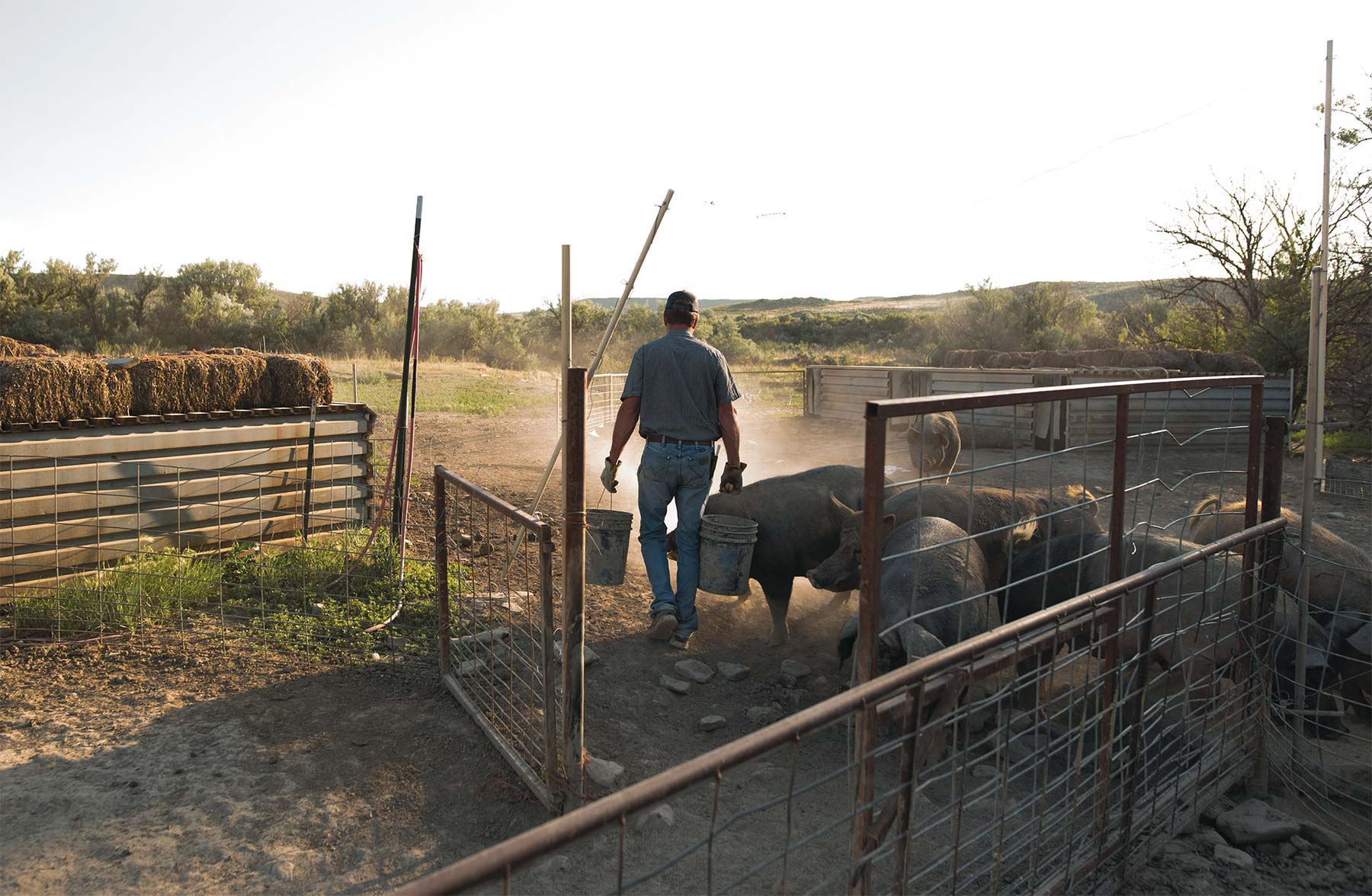
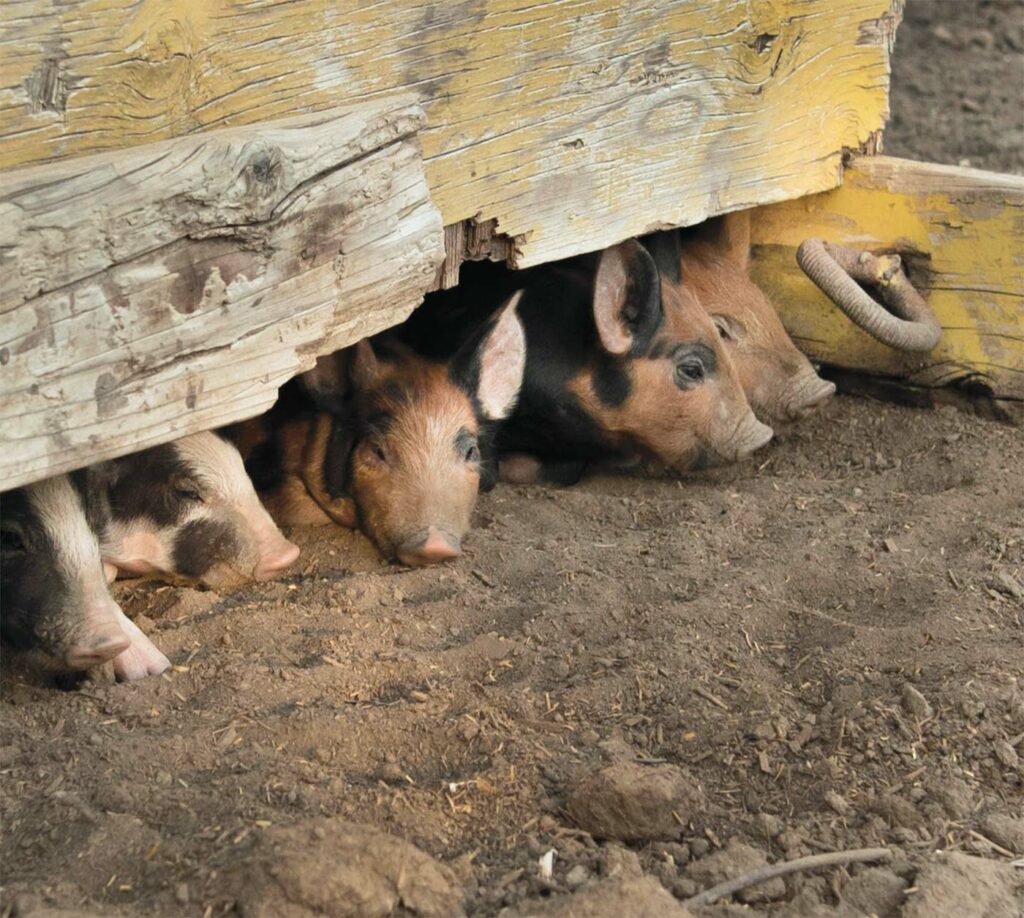
No stranger to more humid climates, Brian Buessing started raising pigs in Kansas, where an abundance of oak and walnut trees inspired him to incorporate an animal on the farm that could harvest acorns and walnuts. Along with his family, Brian moved to Bridger, Montana, in 2016, bringing with him some pigs and over three decades of experience raising livestock under various management practices.
When asked where he considers himself falling on the spectrum of sustainable agricultural practices, Brian says he’s a realist. “I use common sense and don’t go for extremes,” he says. “Th ere has to be a balance. … Anything that can’t or doesn’t get consumed [on the farm] goes to the pigs. It’s all regenerative or recycled or whatever you want to call it.”
While Montana may be short on oak and walnut trees, Brian’s pigs have taken well to the wealth of Russian olives growing on his land. Olive Branch Pork now boasts a relatively free-range mix of heritage-breed pigs, supplying pork regionally in partnership with RegenMarket, from Bozeman to Billings to Jackson Hole, Wyoming.



